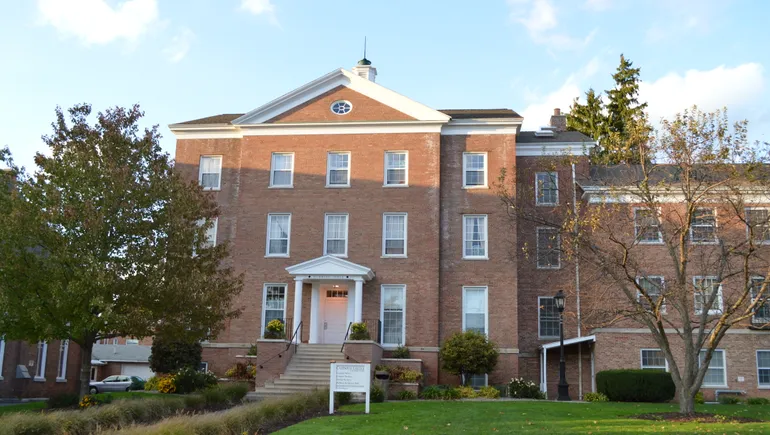Ricardo Azziz has held numerous executive positions in higher education and led the merger that resulted in Georgia Regents University, now Augusta University. He is principal at Strategic Partnerships in Higher Education, or SPH, Consulting Group.
He writes the regular Merger Watch opinion series on corporate restructuring in higher education.
Cazenovia College defaulted on a $25 million bond payment in 2022, closing the next year. Lake Erie College has been struggling to repay its bond debt. College of Saint Rose stopped interest payments on $48 million in debt last year and then attempted to explain to bondholders what went wrong after deciding to close. Alderson Broaddus University, unable to pay its debts, closed abruptly last year, leaving students in the lurch. Birmingham-Southern College, which had maintained high debt levels for years, recently announced it will close after its plan to obtain a lifeline from the state failed.
In addition to declining enrollment, what do these and many other small colleges have in common? A debt burden that becomes eventually unmanageable, as revenues generated through enrollment decline below operational and debt repayment cash flow needs.
Where does the debt come from? Many universities and colleges will borrow, either by issuing debt (aka bonds) or by directly obtaining loans from lenders, mostly banks. The purpose is often to enhance competitiveness by investing in capital improvements.
In fact, a recent Financial Times analysis noted that U.S. colleges “went on a bond-selling spree” between 2020 and 2022, raising over $70 billion through sales of corporate and municipal bonds. U.S. colleges now have $230 billion of outstanding bond debt.
In the years before their closures, both Birmingham-Southern College and the College of Saint Rose had significantly increased their debt burden by pursuing aggressive building programs, adding facilities like residence halls, athletic centers and even a man-made lake. This debt most often is guaranteed by one of the few tangible assets available to colleges and universities — their real estate. However, a college’s real estate may end up unavailable for this purpose if it is already serving as collateral for other debt.
The problem that many colleges and universities face is that incurring growing amounts of debt to expand their facilities does not directly address the increasingly competitive enrollment landscape. Notably, the discordance between enrollment growth and capital investments is particularly pronounced for smaller colleges.
So, where were the bondholders during the run up to the financial failure of an institution?
Issuers of bonds — colleges, in this case — are required by bondholders to maintain certain covenants or conditions. Bond covenants primarily are meant to restrict the borrower from making decisions that negatively impact its financial health.
A covenant is essentially a pledge by an issuer to take certain actions (positive or affirmative covenants) or to avoid others (negative or restrictive covenants) that will impact their ability to repay the debt.
For example, possible bond covenants may restrict a college from taking on new debt or investing in new capital. Or they may require that the a issuer maintain certain minimal financial conditions or assets, as well as provide externally audited financial statements.
However, some colleges appear to be violating these covenants, often not maintaining the financial conditions required by the bond.
The consequences of bond covenant violations can be significant — as Bradley University, the now-shuttered Corinthian Colleges chain and others have found out. Colleges often end up paying higher interest rates and undertaking major budgetary cuts to try and meet covenant requirements.
Bond violations impact the vulnerable student the most. A recent analysis from Fitch Ratings noted that issuers with newly impaired debt in 2023 enroll high shares of minority and low-income students. Colleges with newly impaired debt include those that have defaulted on their payments or are in technical default, such as not meeting their covenant requirements.
Of these institutions’ first-time undergraduates in fall 2022, an average of 55% were non-White and 48% were federal Pell Grant recipients, according to Fitch.
What has been peculiar about the increasing numbers of closures and struggling colleges is the apparent absence of bondholder oversight and action.
It’s not as if bond rating agencies are not critical of the sector. Fitch gave a deteriorating outlook for the U.S. higher education sector for 2024, while S&P Global Ratings had a similar prediction for less selective and more regional colleges.
Moreover, the Financial Times analysis found that one-third of the 447 colleges rated by S&P had BBB+ ratings or lower. That means that these institutions have “adequate capacity to meet financial commitments” currently, according to the agency, but are “more subject to adverse economic conditions.” They also generally pay higher interest rates than higher rated institutions, those between A and AAA.
In 2015, Moody’s predicted a tripling of the rate of college closures by 2017. Paradoxically, the company has recently predicted that the sector has stabilized. Forbes and Bloomberg have each also issued listings of financially struggling institutions.
So where are the bondholders?
Bondholders, as interested parties with a fiduciary responsibility and a potentially more objective view, may be able to highlight warning signs to issuing institutions earlier than might be apparent internally. They may also be able to suggest strategies and tactics to help address these challenges, again earlier than internal leaders might be able or willing to consider. And they may be able to bring external expertise to bear on potential strategies.
However, we see few examples of such interventions. One such occasion was when Holy Names University announced in December 2022 that it was closing, partly citing pressure from $49 million in property debt. In contrast, its lender stated that they felt Holy Names did not need to close and instead offered to help keep the school open. Notwithstanding this offer, Holy Names closed in spring 2023, and its real estate was sold to the highest bidder.
In my conversations with a large lender to the nonprofit and public sector, the absence of bondholder action when a college begins to financially struggle stems from at least three factors.
First, they may not have the necessary operational expertise to assess the institution nor to suggest a plan of action, as they are primarily financial entities.
Second, they generally rely on the institutions themselves to monitor compliance with covenants and other borrower obligations.
And third, the real estate that the lender has the rights to in the event of a default may be worth more than the debt owed – so why intervene? It’s a business, after all.
Nonetheless, bondholders are in the right position to help issuing institutions recognize the need for implementing action plans sooner than they would otherwise occur — actions that may include a merger or consolidation. And they may be able to assist these institutions in making the right decisions by providing external expertise.
This would be a service not only to the institutions they serve and the students involved, but also to their own stockholders.
#bondholders #step #colleges #financially #struggling










